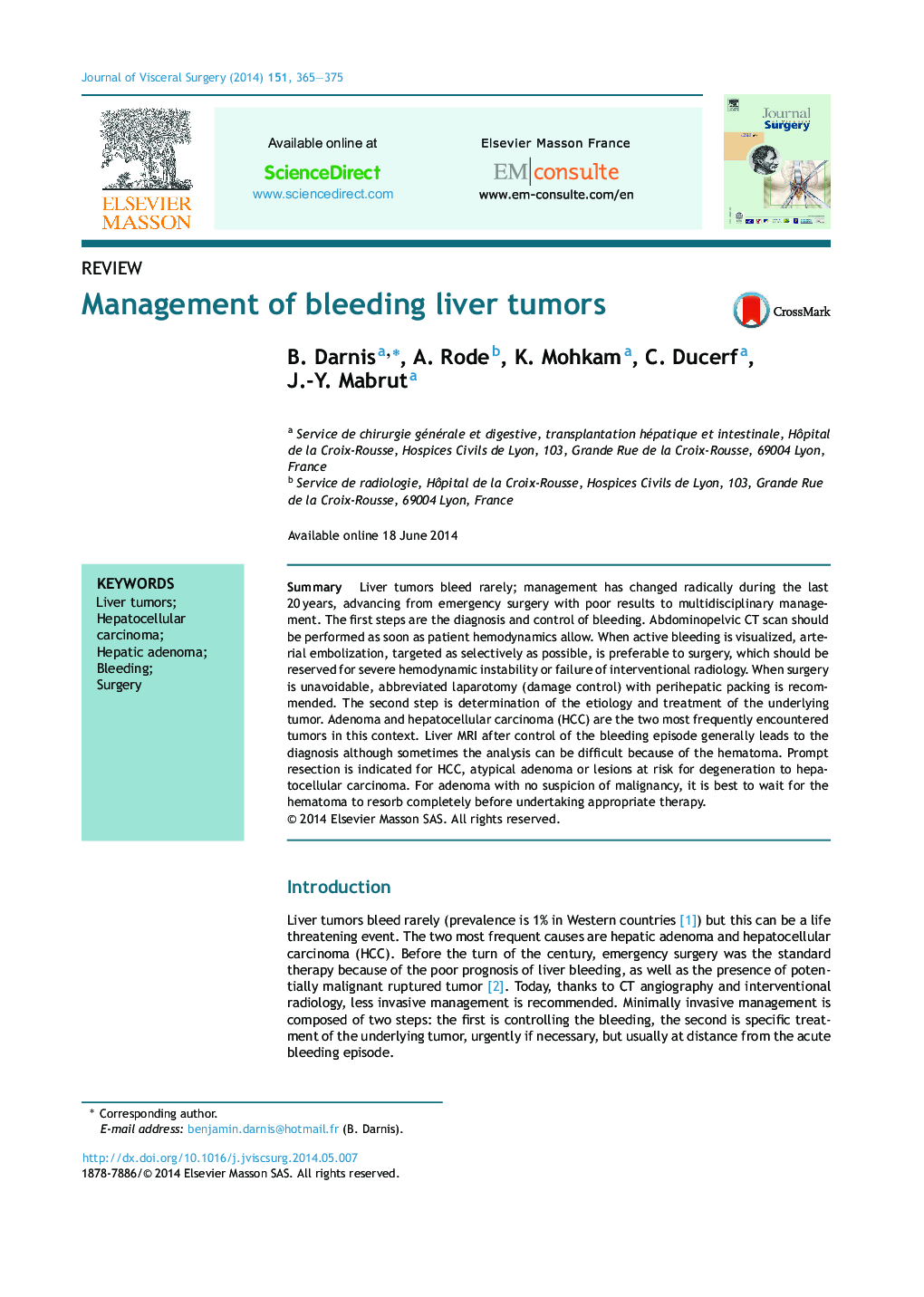| Article ID | Journal | Published Year | Pages | File Type |
|---|---|---|---|---|
| 6110327 | Journal of Visceral Surgery | 2014 | 11 Pages |
SummaryLiver tumors bleed rarely; management has changed radically during the last 20Â years, advancing from emergency surgery with poor results to multidisciplinary management. The first steps are the diagnosis and control of bleeding. Abdominopelvic CT scan should be performed as soon as patient hemodynamics allow. When active bleeding is visualized, arterial embolization, targeted as selectively as possible, is preferable to surgery, which should be reserved for severe hemodynamic instability or failure of interventional radiology. When surgery is unavoidable, abbreviated laparotomy (damage control) with perihepatic packing is recommended. The second step is determination of the etiology and treatment of the underlying tumor. Adenoma and hepatocellular carcinoma (HCC) are the two most frequently encountered tumors in this context. Liver MRI after control of the bleeding episode generally leads to the diagnosis although sometimes the analysis can be difficult because of the hematoma. Prompt resection is indicated for HCC, atypical adenoma or lesions at risk for degeneration to hepatocellular carcinoma. For adenoma with no suspicion of malignancy, it is best to wait for the hematoma to resorb completely before undertaking appropriate therapy.
